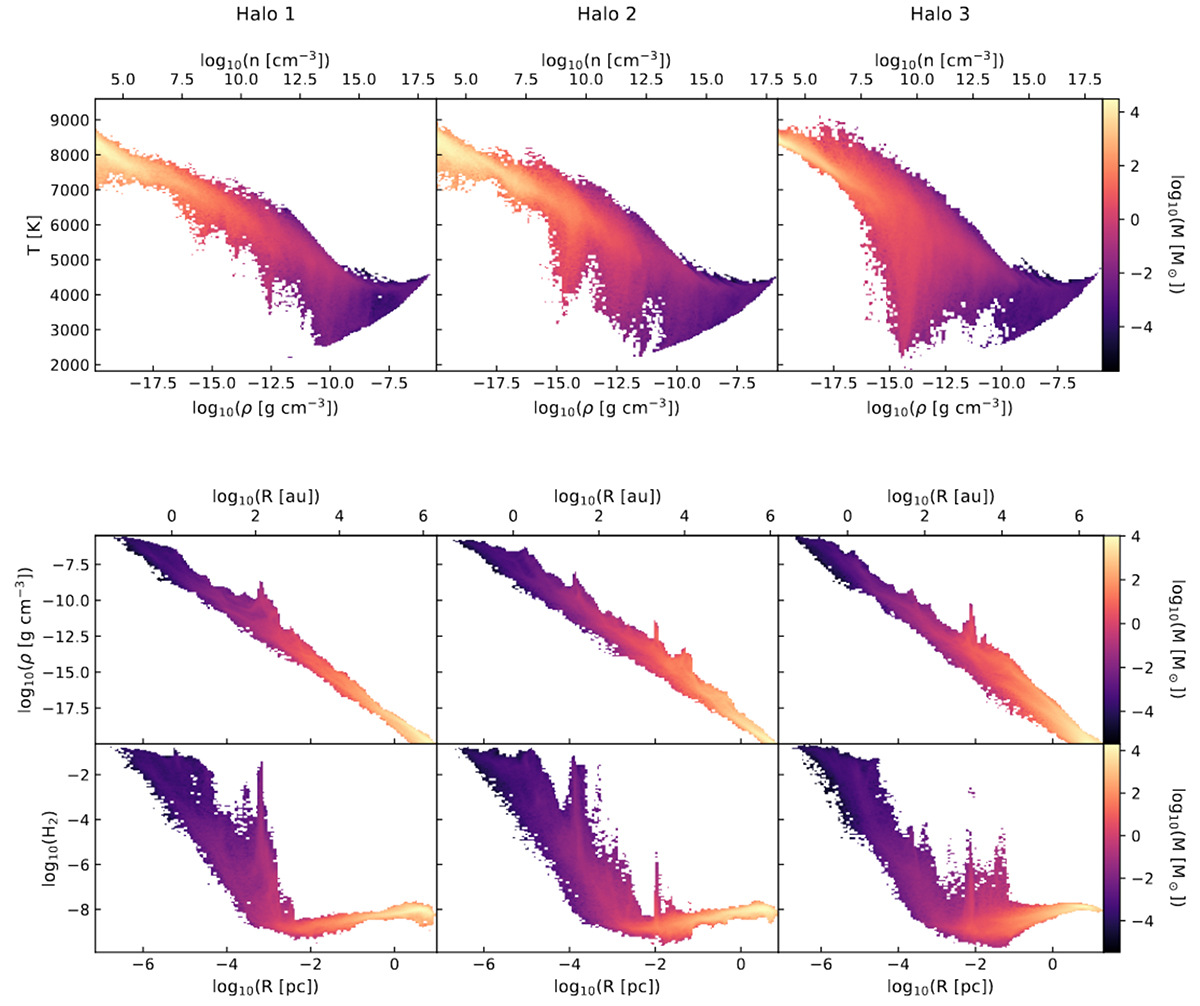Fig. 4.

Download original image
2D histograms of the characteristics of the halos at the point just before the formation of the first sink particle i.e., when the simulations approached their maximum density, weighted by the total gas mass within each 2D bin. Top panel: temperature-density relation. The collapse is close to isothermal at approximately 8000 K, with the temperature decreasing by only a factor of two over more than ten orders of magnitude in density. Bottom panel: radial profiles of density and H2 abundance. The density-radius relationship follows the ρ ∝ R−2 relationship expected for an isothermal collapse. The H2 abundances are initially negligible at the halo virial radius (R ∼ 100 pc) but increases in the centre of the halo once the density becomes high enough for self-shielding and three-body H2 formation to become effective).
Current usage metrics show cumulative count of Article Views (full-text article views including HTML views, PDF and ePub downloads, according to the available data) and Abstracts Views on Vision4Press platform.
Data correspond to usage on the plateform after 2015. The current usage metrics is available 48-96 hours after online publication and is updated daily on week days.
Initial download of the metrics may take a while.


